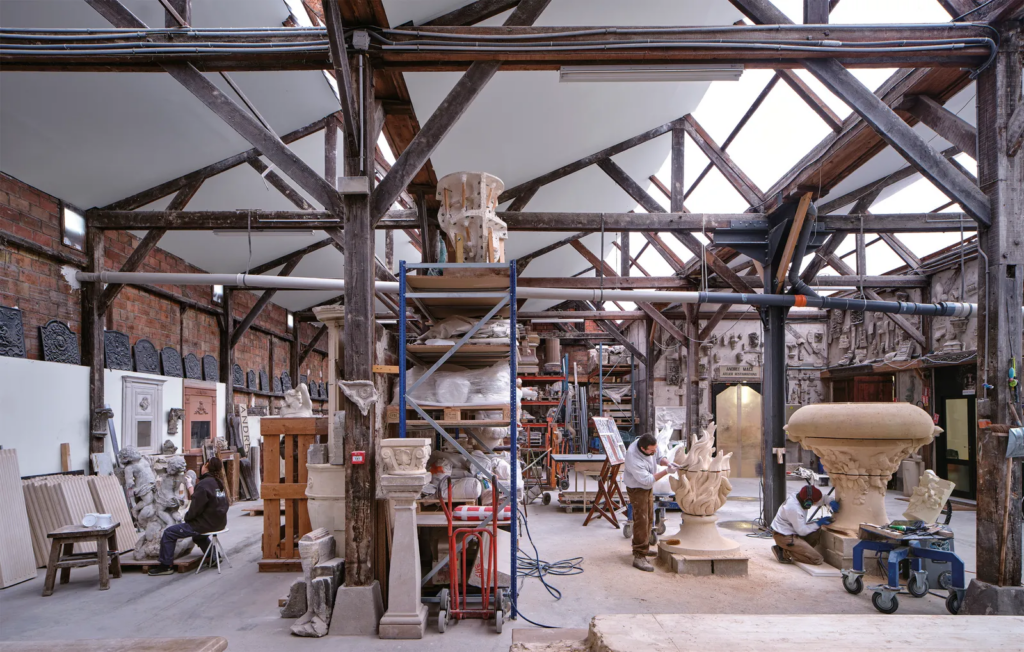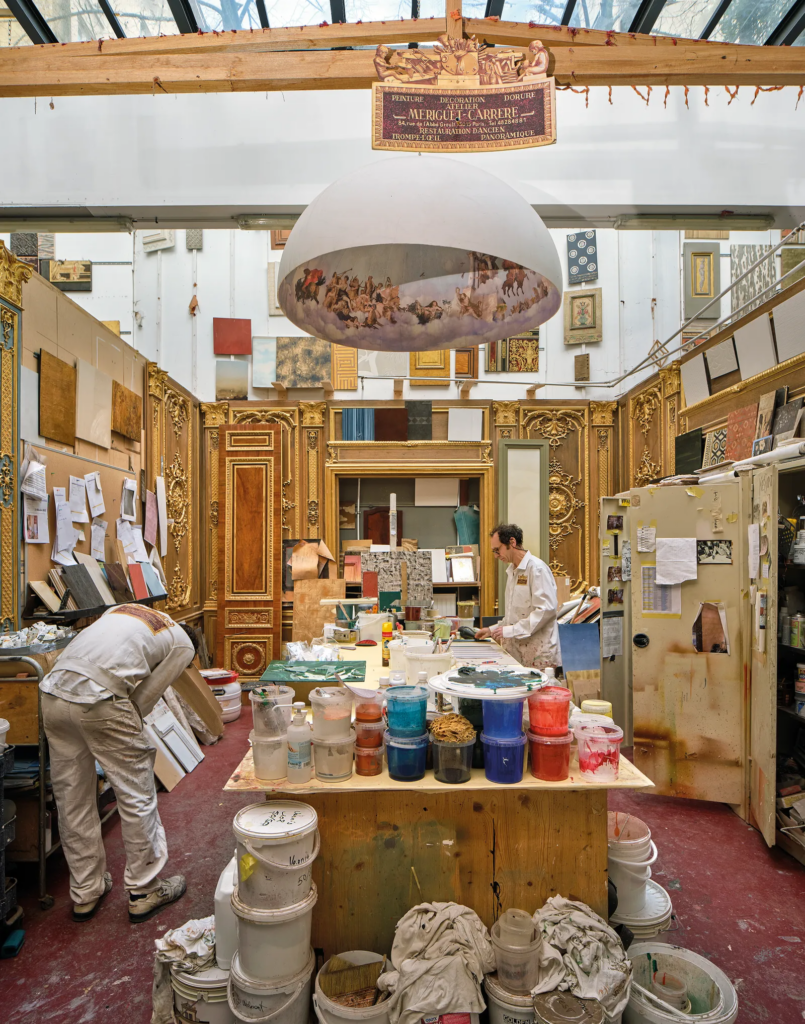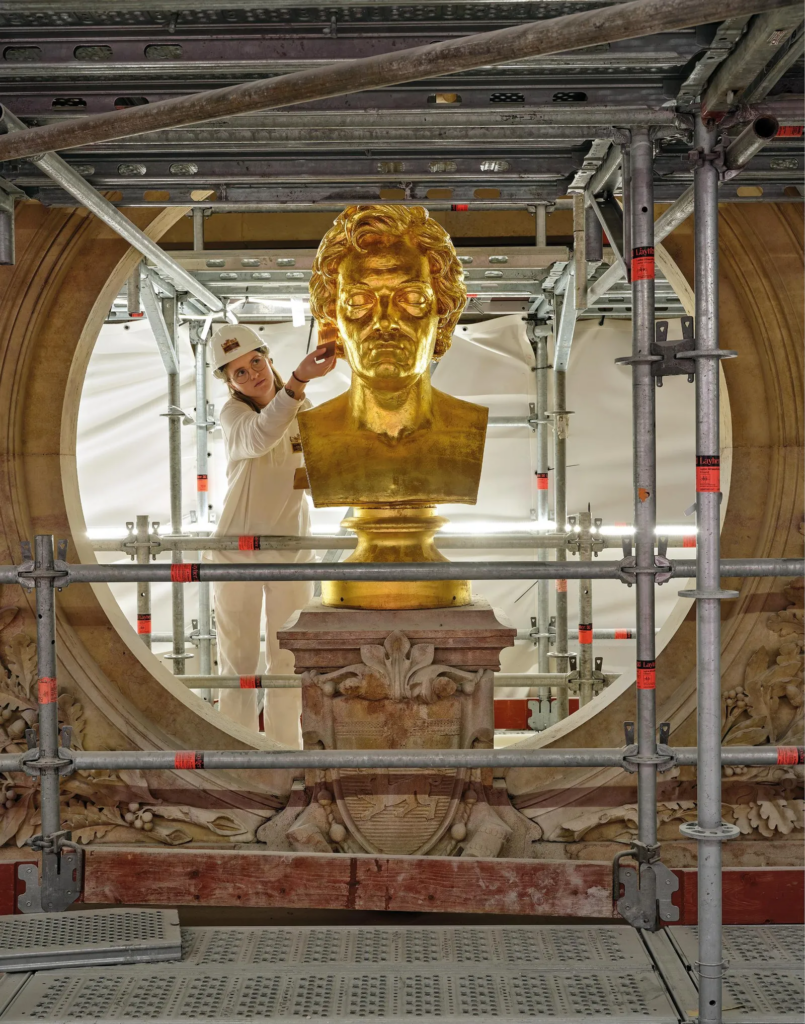
This summer, more than 15 million spectators will flock to Paris to watch the Olympic Games and Paralympic Games. Tourists don’t travel all the way just to watch sporting events. As in the past, Huadu’s world-class cultural institutions and attractions will also attract people to visit, and will be broadcast around the world through television broadcasts, becoming an elegant background for exciting events. To ensure that Paris shines, the French Ministry of Culture and other agencies have launched a number of programs to revitalize landmarks, including the Paris Opera, the Arc de Triomphe Caruso and the Grand Palais. The Atelier De France is a key player behind the scenes. This alliance includes more than 50 workshop organizations and specializes in restoring historical buildings.
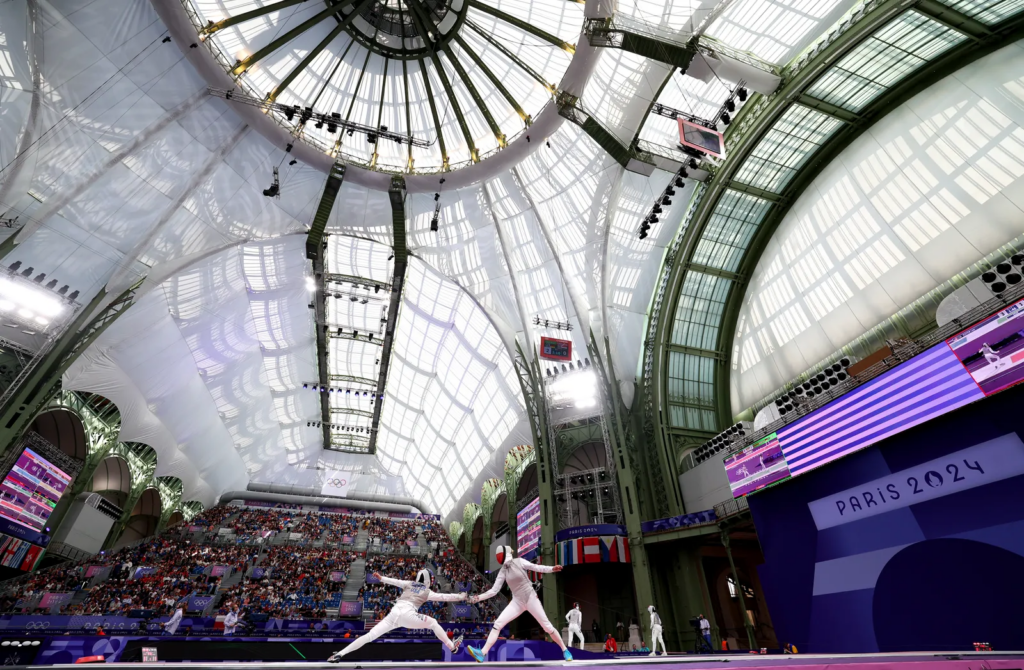
“Our mission is to preserve tradition,” said group president Antoine Courtois. At the time of the interview, he was visiting Atelier Mériguet-Carrère, a 64-year-old member workshop located in the Marais district. They specialize in restoring decorative paintings, gold leaf and leather goods. Historical sites the company has helped renovate include the Oval Office in the White House and the Elysée Palace, the French presidential palace. “We all say that not passing on this skill is a kind of theft. We learn it and then we must share it.” Courtois said.
The Paris Opera House built in 1875 will be open to the public during the Olympic Games. The Atelier Mériguet-Carrère workshop is responsible for re-gilding the various comedy and tragedy masks on the top of the building’s facade, as well as the bronze busts of composers and lyricists. , not missing an inch. They also restored the railings surrounding the Egyptian Obelisk of Luxor on the Place de la Concorde and the fences of the Luxembourg Gardens to their golden glory.
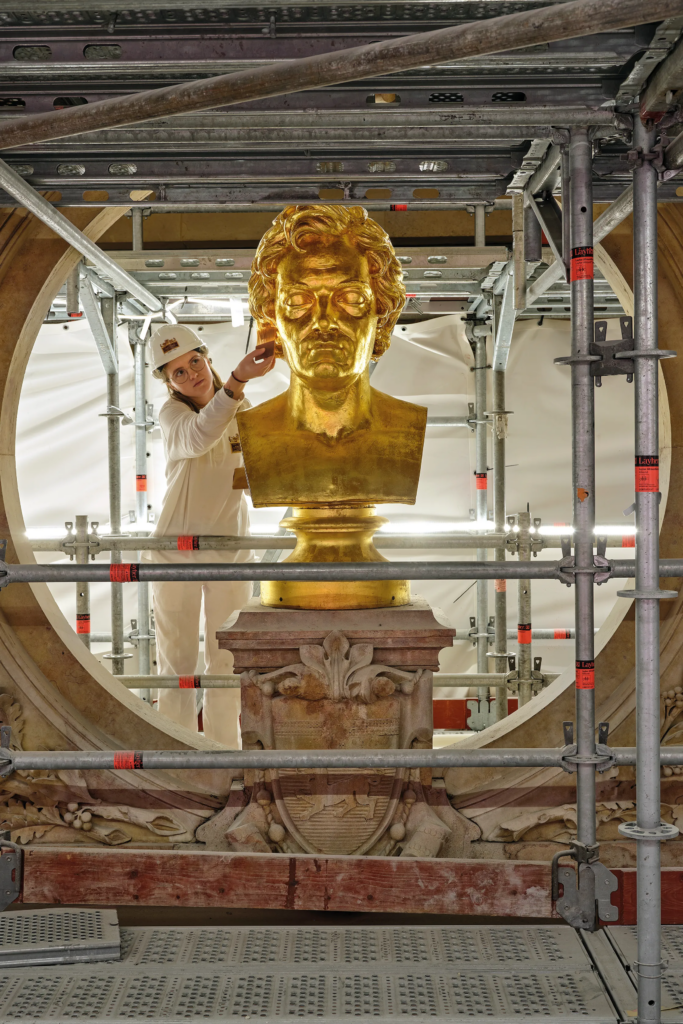
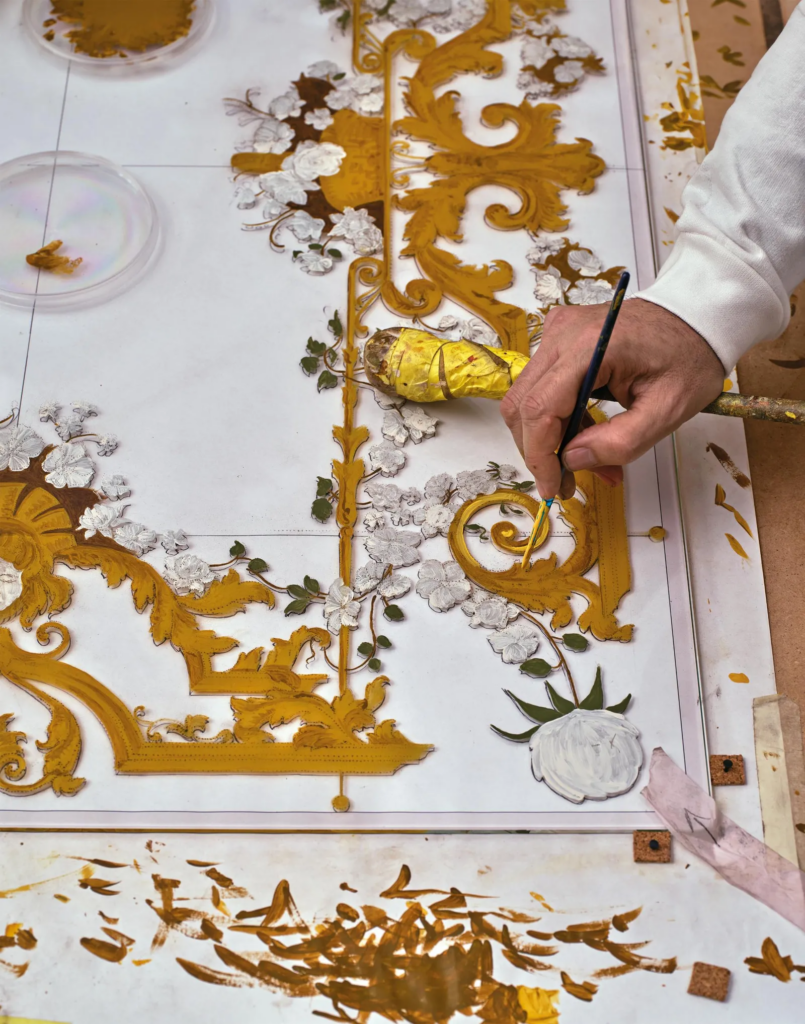
Last year, another 78-year-old member company, H. Chevalier, located in the Suresnes district in the western suburbs, restored eight guard booths/posts on the Place de la Concorde. The relatively young sculpture department Atelier Chevalier restored the small arch of the Caruso Arc de Triomphe built in the early 19th century to celebrate Napoleon’s victory, giving the red marble columns and decorations a new look.
But the most impressive renovation has to be the Grand Palace. The huge glass dome building built for the World’s Fair in 1900 was used as a fencing and taekwondo competition venue during the current Olympic Games. With the support of Chanel, which has held its shows here since 2005, this jewel of the Belle Epoque has undergone a major renovation, spearheaded by a building classified as one of France’s leading historical monuments. François Chatillon is the architect, and the executive staff includes thousands of craftsmen from 57 companies, including Ateliers De France.
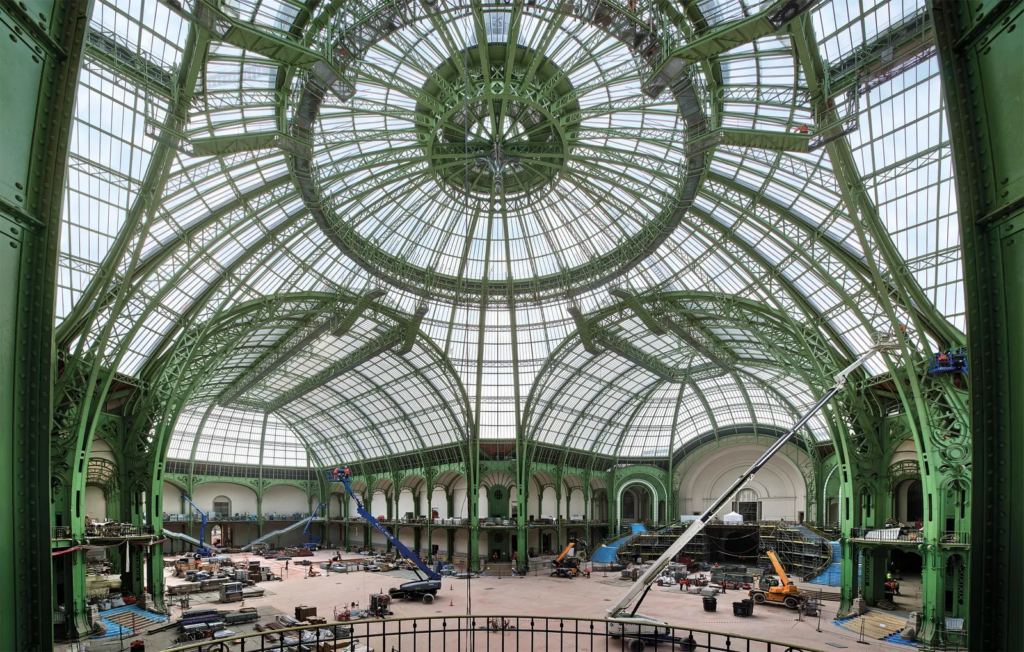
The center of the Grand Palace is its main hall, which is 650 feet long and 165 feet wide. It is as majestic as a cathedral and is the largest performance venue in Europe. “Everything is bigger than you think,” François Wemaëre, CEO of the VLD workshop, said during an on-site visit in February. They specialize in metal craftsmanship. “Some of the decorative copper flowers are as wide as a meter so they can be seen from a distance.”
The floor in the main hall was originally made of clay, but was covered with cement in 1964. When the current phase of restoration began in 2021, everything was gutted and redone. After installing water-based underground heating and cooling equipment on the floor, the H. Chevalier team laid 145,000 square feet of cement and dyed it reddish brown to simulate clay.
VLD rebuilt the 3,600-foot fence along the balcony and the famous Escalier d’Honneur, straightening the ironwork and replacing missing or damaged copper pieces. “More iron is used here than in the Eiffel Tower,” Wemaëre said as he studied the site. (He was not exaggerating. 8,500 tons of iron were used in the Grand Palais, and 7,300 tons were used in the structure of the Eiffel Tower). The team worked with Maison Dureau to scrape away a century of paint until the original black metal was exposed, then repaint it in that hue. Overall, VLD spent a total of 3,000 hours repairing the railings and 1,000 hours repairing the stairs.
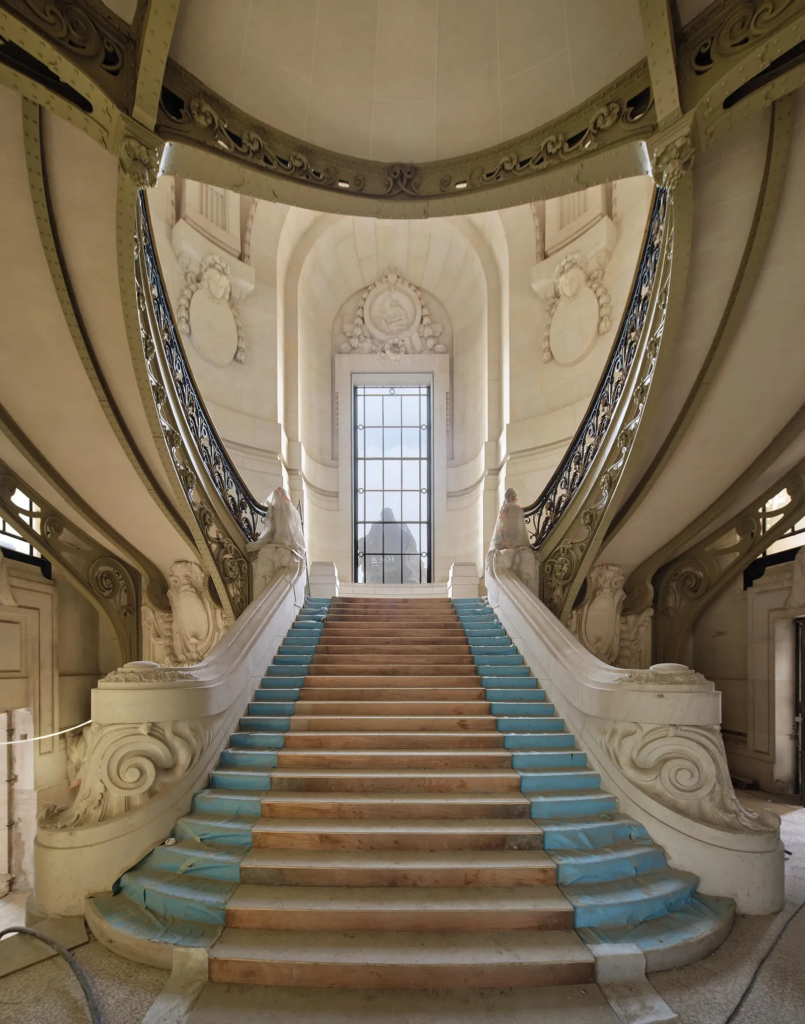
All partitions in the Grand Palace have been removed, and windows that have been blocked by bricks for many years have been reopened, increasing the overall space by 60%. The capacity can be increased from 5,600 to 9,000 people, and the main hall has also been opened. More transparent and brighter. On the exterior of the palace, craftsmen carefully polished the copper flower relief on the 23-foot-tall front door, removing the patina to reveal the true color of the metal, and then painted the iron frame with Tibetan green, a dark green paint reminiscent of the color of pine trees. “Every time we discover something new, we are amazed.” Wemaëre said that other areas of the Grand Palais will be gradually reopened before 2026.
